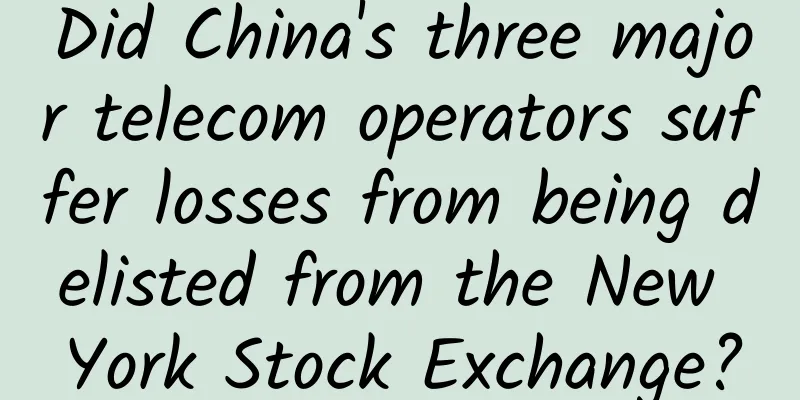About NSA and SA of 5G, you will understand it in seconds after reading this!

|
The first official 5G standard is about to be released, and I believe everyone is looking forward to it. I have previously told you that we had already released half of the 5G standard in December last year. Yes, that’s right, it was the “non-standalone (NSA)” 5G standard at that time. What we are waiting for now is the 5G standard of "Independent Networking (SA)". Although we have heard about non-standalone networking and standalone networking, NSA and SA many times, few people can really understand what they are all about.
Today, I will use the most easy-to-understand language to give a comprehensive introduction to both of them, hoping that everyone can fully understand what they are all about. Without further ado, let’s get started! In Nanjing Confucius Temple, there is a restaurant owner named Stephen Chow.
The restaurant he opened was called Restaurant No. 4, and the chef was called Fat Four. The restaurant's business has always been good, but as the business grew, it became overcrowded and could no longer meet the needs of customers. So, Stephen Chow plans to expand his business. However, expanding the business requires a lot of capital, and one cannot invest blindly. So, he thought of several expansion plans: The first option (option A) is to open a brand new restaurant, rent a storefront, name it "Restaurant No. 5", and hire a new chef, named Fat Five. This solution is the simplest and most direct, and the new chef can give full play to his cooking skills in the new restaurant. However, this option is also the most expensive and requires the most money. The second option (option B) is to open a brand new restaurant. Rent a storefront and name it "Restaurant No. 5". However, do not hire a new chef. Fat Four will be directly responsible for taking care of Restaurant No. 4 and Restaurant No. 5. Although this solution saves money, it is a bit troublesome and difficult to operate. The most troublesome thing is that Fat Four may be too busy to handle it. So, Master Xing began to struggle between the two options... Well, the smart communication expert must have guessed the above story right away - the chef in the example is the core network. The store is the base station. Number 4 is 4G. Number 5 is 5G. Plan A Plan B And I want to tell you that in fact, Solution A in the story is an independent networking method. And Solution B is a non-independent networking method. (Note that there are many types of independent and non-independent networking, and Solution A and B are one of them.) Simply put, the reason why there is a distinction between independent networking and non-independent networking is ultimately money. If you are a wealthy person with plenty of money and want to have a pure and perfect 5G network to provide users with the coolest experience, then it is very simple. Just build all of them at the same time and use independent networking. The new 5G core network + new 5G base stations are completely separated from 4G, which makes it very easy to build and maintain. It is also very easy for users to use.
However, not all operators are wealthy. In order to facilitate everyone to gradually enjoy 5G, in addition to the independent networking method, the 3GPP organization, which pursues a harmonious society, has also designed many non-independent networking methods, which is equivalent to providing "packages" of various grades. There are two main types of independent networking. How many types of non-independent networking are there? 8 types... The reason why 5G networking is complicated is because of this non-independent networking. Look at the picture below. There are obviously more non-independent networking methods than independent networking methods, right? Each small box represents a networking method. Let's introduce them one by one. Let's start with the simple ones. The solution A we mentioned earlier, where the core network and base stations are all newly built, is Option 2. Operators with sufficient financial resources or operators starting from scratch will undoubtedly choose this solution. "Option 2" networking method
We are rich, no need to explain. Alternatively, you can upgrade the existing 4G base stations to enhanced 4G base stations and then connect them to the 5G core network, which can reuse the old ones and save some money. e stands for enhanced, which means enhanced This is a bit weird, it should actually be e(LTE eNB) "Option 5" networking mode This solution is the "Option 5" networking method. In any case, both Option 2 and Option 5 involve building independent networks, so they both belong to the category of "independent networking methods". Standalone networking is very simple. The real trouble is non-standalone networking. Ahem, in order to maximize investment, to steadily advance network construction, and to..., we decided to adopt non-independent networking (serious face.jpg).
I won’t tell you, it’s actually “poor”… Calm down! Calm down! Please think carefully about this - if you were Stephen Chow and wanted to expand your business, would you hire a chef first? Or expand the store first? I think most people will choose to expand their stores first. Yes, that is, build 5G base stations first. Is it hard to understand? Not really. Look at those restaurants. If there is not enough space inside, they just put tables outside. . .
The premise is that the urban management will not cause trouble for you Build 5G base stations first. This is indeed simpler. If I can’t afford a pack of cigarettes, I’ll just buy one! Slowly save money and build slowly: one, two, three… Little by little, a lot will come. The 5G core network (the five fat chefs) is relatively expensive, and once you hire them you have to maintain them, which costs money. The above "4G core network + 4G/5G base station" solution (that is, Stephen Chow's solution B) is a typical "3-series" networking method. "3 series" networking modes include option 3, option 3a, and option 3x. In the "3-series" networking mode, the LTE dual-connection architecture is used as a reference. What is Dual Connectivity Architecture? In the LTE dual-connectivity architecture, a UE (user terminal) can simultaneously use the radio resources of at least two different base stations (divided into a primary station and a secondary station) in a connected state. The 5G base station cannot be directly connected to the 4G core network, so it will be connected to the 4G core network through the 4G base station. Because the processing power of traditional 4G base stations is limited, they cannot bear the burden of 5G base stations. Therefore, hardware transformation is required to turn them into enhanced 4G base stations. This networking method is "Option 3". Some operators are unwilling to spend money to transform 4G base stations (after all, they are old equipment and will be eliminated sooner or later). So, they thought of other ways. In the first method, the user plane of the 5G base station directly connects to the 4G core network, and the control plane continues to be anchored to the 4G base station. What is the user plane? What is the control plane? Simply put, the user plane is the user's specific data, and the control plane is the management and scheduling commands. The above method is called "Option 3a". The second method is to divide the user plane data into two parts. The part that will cause a bottleneck for the 4G base station is migrated to the 5G base station. The remaining part continues to go through the 4G base station. This method is called "Option 3x". Let's put the three of them together and compare them: Note that only "Option 3" is an enhanced 4G base station The 3/3a/3x networking mode is currently the most popular mode among foreign operators. The reason is very simple:
Well, although we think it is better to expand the store first, some bosses are willing to hire a chef first. That is, build the 5G core network first. After all, many high-quality 5G experiences can only be realized based on the 5G core network. Replace the 4G core network in the "3-series" networking mode with the 5G core network, and this is the "7-series" networking mode. It's easy to remember, right? It should be noted that because the core network is a 5G core network, under this method, 4G base stations need to be upgraded to enhanced 4G base stations. Finally, let’s take a look at the "4 Series". In fact, it is very simple. In the "4-series" networking, 4G base stations and 5G base stations share the 5G core network. The 5G base station is the master station and the 4G base station is the slave station. The only difference is that the user plane of option 4 goes through the 5G base station, while the user plane of option 4a directly connects to the 5G core network. As shown in the following figure: The above is the explanation of the networking method. I wonder if everyone understands it? Do you understand the tricks? Let me knock on the blackboard - among so many departments, the most important one is the 3rd department. Once you understand the 3rd department, the other departments are easy to understand. In the future, the departments you will deal with and study the most are probably the 3rd and 2nd departments. Throw in a full version of the family portrait to see more clearly: In fact, for non-independent networking, as time goes by, it will eventually evolve towards independent networking. The speed of evolution depends on the growth of the 5G ecosystem. To put it bluntly, it’s still the old saying, if someone uses it, everything will be fine and the evolution will be fast. If no one uses it, then #@¥%@&. . . Finally, here comes the free question. Guess which way our country's three major operators will implement 5G network construction? |
Recommend
The embarrassing 400G: When will the operator backbone network be commercially available?
400G backbone network, a term that has not yet ar...
How to choose DCIM, a data center infrastructure management tool?
DCIM (Data Center Infrastructure Management) is a...
How Should Operators Carry Out Cross-industry Integration?
According to the information disclosed by the 201...
GitHub requires two-factor authentication for all accounts!
GitHub has announced that before 2023, all develo...
[Black Friday] HostHatch: $29/year-dual-core/4GB/50G NVMe/5TB/1TB/Los Angeles and other data centers
HostHatch has launched the 2023 Black Friday even...
They are all chips, so why can’t computer CPUs be used in mobile phones?
This question is actually very simple. As long as...
Linux will support new network technology based on Li-Fi
According to phoronix, Li-Fi technology supplier ...
Do you know the differences between different versions of HTTP protocol?
[[420148]] Introduction There are already multipl...
5G is here! Technology trends and standards you must know
In 2017, the application of 5G technology has bec...
Tian Suning: From the Internet of Everything to the Intelligent Internet, a new company species, "customer operator", is born
From November 7 to 9, Wuzhen, a water town in the...
SD-WAN in 2019: A conundrum for service providers
It’s that time of year again when analysts and ex...
Breaking news! Huawei announced that it will launch a full set of 5.5G network equipment for commercial use in 2024
On June 29, Yang Chaobin, Huawei's director a...
The base station power consumption is too high and the charges are 9 times higher than 4G. Are the operators facing a big problem this time?
Previously, China Unicom officially announced tha...
7 ways artificial intelligence is impacting enterprise IT infrastructure
Artificial intelligence (AI) technology has gaine...
5G development still has a long way to go
The construction and development of 5G has gone t...









